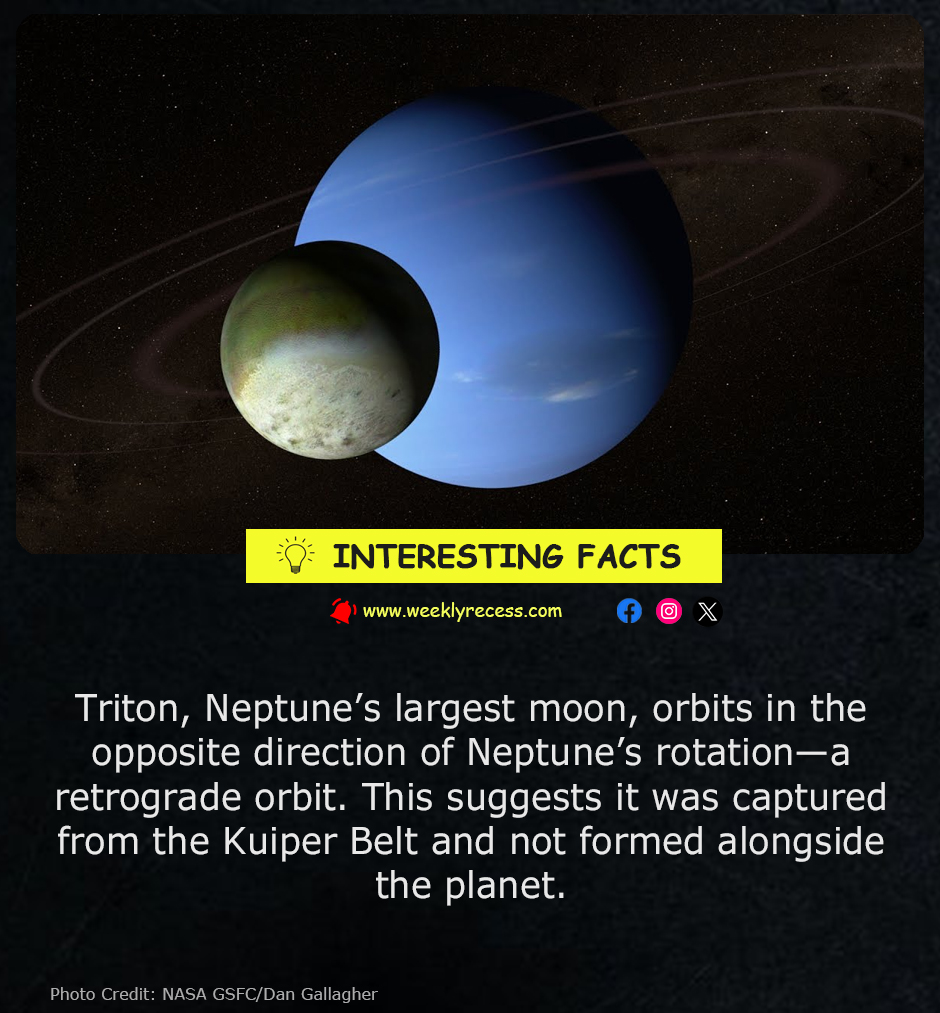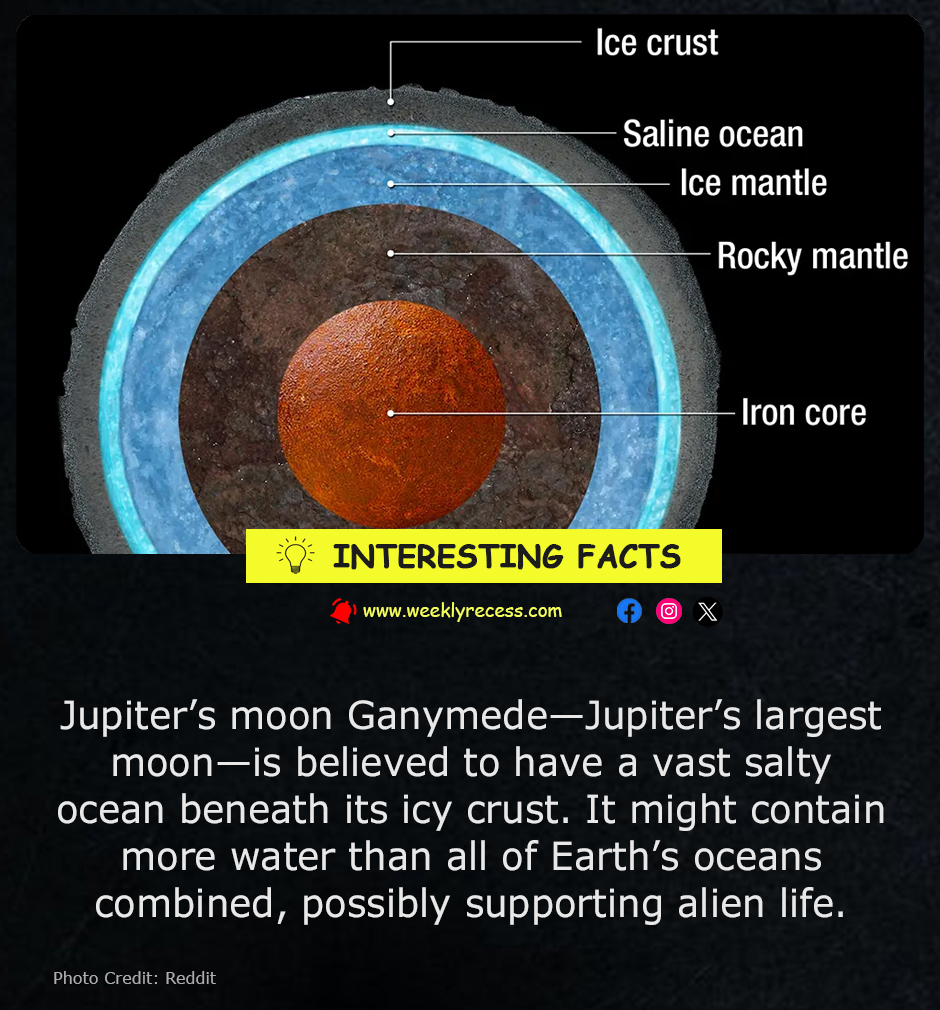
Triton, the largest moon of Neptune, stands out in the solar system for its unusual behavior—it orbits the planet in the opposite direction of Neptune’s rotation, a rare phenomenon known as a retrograde orbit. This backward motion is a strong clue that Triton wasn’t formed alongside Neptune, like most moons, but was instead captured by Neptune’s gravity long ago. Scientists believe Triton may have originated in the Kuiper Belt, a distant region filled with icy bodies and dwarf planets, before being pulled into Neptune’s orbit. Its capture would have been a violent process, possibly disturbing or destroying any original moons Neptune had. Triton’s strange orbit and icy, geologically active surface continue to intrigue astronomers, offering a glimpse into the chaotic and unpredictable nature of our solar system’s history.

Jupiter’s moon Ganymede may have more water than Earth—beneath its frozen surface.

A theory suggests a second moon once orbited Earth—until it crashed into the Moon we know today.




